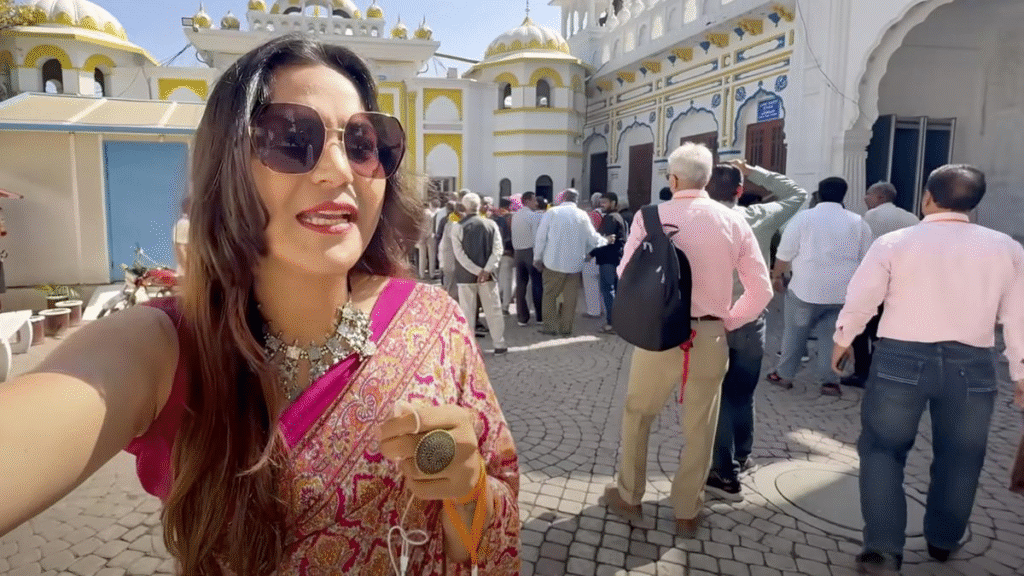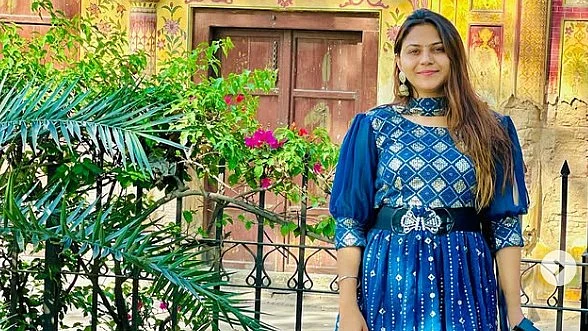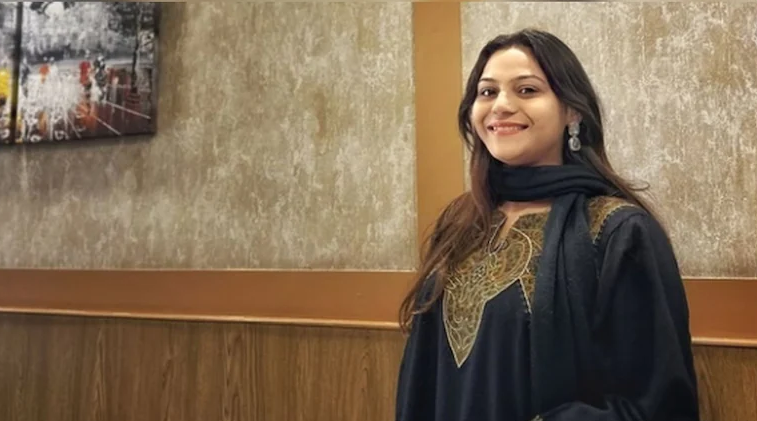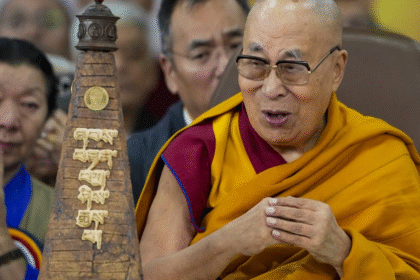YouTuber Jyoti Malhotra’s Judicial Custody Extended by 14 Days in Espionage Case Involving Classified Leaks
YouTuber Jyoti Malhotra’s judicial custody has been extended by 14 days in a high-profile espionage case linked to leaked classified documents. The Delhi court decision comes amid an ongoing investigation into alleged national security breaches.
🔹Arrest of a Rising Social Media Figure
On May 16, 2025, Jyoti Malhotra, a 33-year-old YouTuber known for her travel channel “Travel with JO”, was arrested by the Hisar Police at her residence in the New Aggarsain Extension locality of Hisar, Haryana. Malhotra, who had gradually built a niche following for her regional travel content, was taken into custody under allegations of espionage, a charge that shocked her digital followers and the wider influencer community.
Her arrest was made under stringent provisions of the Official Secrets Act (OSA) and the Bharatiya Nyaya Sanhita (BNS) — India’s new criminal code that replaced the Indian Penal Code earlier this year.
🔹Charges: Official Secrets Act and Alleged Contact with Pakistan-Based Operatives
The FIR lodged by the Hisar Police points to a suspected espionage operation where Malhotra was allegedly in contact with a known Pakistani intelligence operative named Ehsan-ur-Rahim, also known as Danish. He was a staffer at the Pakistan High Commission in New Delhi until May 13, 2025, when he was expelled by the Indian government for “indulging in activities incompatible with his diplomatic status.”
Sources familiar with the investigation allege that Malhotra’s digital and personal communications with Rahim dated back to November 2023, and that her continued interaction with the suspected ISI operative had the potential to breach national security protocols, particularly concerning civil and paramilitary installations in northern India.
According to police submissions in court:
“Malhotra was aware of Rahim’s foreign intelligence links but continued communication despite repeated warnings and without disclosing her engagement to authorities. She was being developed as an ‘asset’ by the ISI.”
🔹Timeline of Judicial Proceedings
- May 16, 2025: Malhotra is arrested and produced in court. She is remanded to 5 days of police custody.
- May 21: Police seek and obtain 4 additional days for custodial interrogation.
- May 26: Court remands her to 14-day judicial custody.
- June 9: A Hisar district court rejects her regular bail plea, citing that the investigation was “still active and sensitive.”
- July 1: Judicial custody is extended by another 14 days.
- Next hearing scheduled: July 21, 2025
Her counsel, Advocate Kumar Mukesh, confirmed that she appeared before the court via video conference, and reiterated that she denies the charges. However, he refrained from commenting on specifics, citing the sensitive nature of the case.
🔹Prosecution vs Defence: Key Legal Contentions
The prosecution has so far presented the case as one involving:
- Deliberate contact with known enemy agents
- Potential transfer or sharing of sensitive civic and governmental data
- Violation of Section 3 and 5 of the Official Secrets Act
- Non-disclosure of foreign contacts under mandated digital norms for influencers
However, the defence maintains that:
- Malhotra had no access to classified or military intelligence,
- The accused was unaware of Rahim’s status as a foreign intelligence agent,
- The chats shared in the FIR are non-incriminating and casual in tone,
- Her status as a YouTuber is being “unfairly politicised to make a national example.”
The defence team also highlighted that no laptop, phone, or cloud data “demonstrating the alleged espionage” has been made available to the court or defence so far, suggesting procedural gaps.
🔹What the Police Have Said Publicly
In one of their few official statements since the arrest, a senior Hisar police official clarified:
“There is no current evidence that the accused had access to military secrets or paramilitary formations. However, she knowingly engaged with persons identified as Pakistani intelligence handlers and ignored repeated cyber red flags raised in backend tracking.”
The department maintains that further forensic examination of devices is underway, and has submitted requests for Google account data, YouTube monetisation records, and foreign IP traffic logs linked to Malhotra’s digital activities.
🔹Public and Political Response
The case has drawn sharp and divided public reactions.
- Supporters and followers of Malhotra have launched online petitions calling her arrest “excessive,” with hashtags like #FreeJyotiMalhotra trending on X (formerly Twitter).
- National security analysts and former RAW officials, however, warn that the incident could point to a new “digital-age espionage vulnerability” where non-state actors like influencers and vloggers could be compromised without conventional surveillance protocols.
Congress spokesperson Deepa Das commented:
“We must protect due process. But we also need urgent reforms to monitor digital vulnerabilities, especially among influencers interacting globally.”
Meanwhile, BJP MLA from Hisar, Suresh Saini, demanded an overhaul of YouTuber licensing protocols in India:
“This is not about one woman. This is about how exposed India’s digital society has become. When a YouTuber can become a channel for espionage, we need new digital ethics legislation.”
🔹Broader National Security Implications
The arrest of Jyoti Malhotra has raised alarms about a potential new category of civilian espionage threats:
- Social media influencers, with access to visual documentation, border state travel, and rapidly expanding foreign audiences, are now seen as vulnerable touchpoints for foreign intelligence engagement.
- Lack of formal media training, security vetting, and mandatory digital disclosures among Indian influencers has led to a policy vacuum — now being called out by cyber experts and media regulation advocates.
Former National Security Adviser (NSA) analyst Vikram Choudhury remarked:
“We must stop thinking of espionage as cloak-and-dagger. In 2025, espionage could look like a YouTuber with 60,000 subscribers and a camera drone.”
🔹A Digital Nation’s Blindspot
Jyoti Malhotra’s arrest may just be the beginning of a larger national conversation. It reflects a new phase of asymmetric threats — where trust, data, and technology intersect dangerously in everyday life.
As judicial proceedings continue and new evidence is awaited, the case has already begun to influence policy circles, media watchdogs, and national security advisors alike. The line between personal content creation and national vulnerability has never been thinner.
🔹 From Soft Power to Soft Target: A Shift in Espionage Tactics
The case of Jyoti Malhotra is being seen as part of a growing trend of espionage efforts that exploit social media ecosystems to build ‘assets’ outside traditional intelligence paradigms.
Former R&AW officer Pravin Chandok explains:
“In the Cold War era, spies were diplomats, journalists, or defectors. In the digital age, they’re influencers, crypto analysts, and NGO workers. They don’t carry files. They carry clout.”
With her YouTube channel “Travel with JO”, Malhotra had access to:
- Military cantonments on tourism routes (e.g., Himachal, Ladakh, Rajasthan)
- Visual archives of sensitive public infrastructure
- Location metadata from vlogs and photo uploads
- Private interactions with foreign audiences via Instagram DMs and Telegram
This permeability of personal-professional-public spaces is what makes digital creators uniquely susceptible.

🔹 Contact with a Known Pakistani Intelligence Operative
Investigators confirmed that Malhotra was in contact since November 2023 with Ehsan-ur-Rahim alias Danish, who was later expelled by India on May 13, 2025. Rahim was a junior staffer at the Pakistan High Commission and is alleged to have been operating under diplomatic cover for the ISI.
🧩 Timeline of Alleged Espionage Contact:
- Nov 2023: Initial outreach via Facebook posing as an event coordinator for “South Asian Digital Creators Conclave”
- Dec 2023–Feb 2024: Shift to Telegram and ProtonMail; exchanges involving travel locations, video plans, and shooting permissions
- March 2024: Offer made to sponsor a new series focused on “railway journeys and industrial towns” in North India
- April 2024: Malhotra received an external hard drive by courier — which, per sources, is now a subject of forensic recovery
Senior Haryana Police officials allege that while Malhotra did not leak classified documents, her access, digital footprint, and influence made her a viable “grooming candidate.”
🔹Influence Operations and the ISI’s New Playbook
The alleged modus operandi in Malhotra’s case mirrors several known tactics used by foreign intelligence services, including:
- Building rapport through flattery and grants
- Offering ‘collaborations’ or funding under the guise of digital promotions
- Extracting data indirectly via geo-tagged videos, livestreams, and insider visuals
- Luring creators into vulnerable positions through ‘exclusive’ foreign invites
This method is low-cost, high-yield — and most critically — below the radar of traditional counterintelligence systems.
🔹Surveillance Gaps and Platform Accountability
Malhotra’s digital life passed through YouTube, Instagram, Telegram, WhatsApp, Facebook, and a now-deleted blog. Investigators are now requesting platform-level data dumps, including:
- Chat records with foreign IPs
- Metadata from channel uploads and livestreams
- AdSense payment histories and foreign donations
However, tech companies’ inconsistent cooperation with Indian authorities has become a point of friction.
An officer in the Ministry of Electronics and IT (MeitY) said:
“We’ve been waiting for weeks to get verified channel analytics and messages. Platform immunity can’t override national security.”
In 2024, India’s new Digital Surveillance and Data Sovereignty Bill sought to tighten scrutiny of foreign-funded content creators, but enforcement remains patchy.
🔹A Pattern Across South Asia?
Malhotra’s case is not isolated. Other digital creators across South Asia have been investigated or warned in recent years:
- In 2023, a Kathmandu-based fashion blogger was found to have exchanged emails with Chinese handlers.
- In 2024, a Bangladesh-based food vlogger was caught documenting routes near military installations and rail yards.
- In 2022, an Indian drone vlogger was interrogated after footage of BSF posts went viral.
“It’s a consistent pattern of intelligence collection through innocuous content,” said Maj. Gen. (Retd.) Sanjeev Bansal.
🔹Gendered Dimension: Vulnerability and Grooming
Investigators and counterintelligence experts are also grappling with how women influencers are disproportionately targeted for online grooming by foreign operatives.
Malhotra, like several others, was allegedly:
- Contacted under the pretext of “networking”
- Flattered with praise and offers of global visibility
- Isolated from local creators through encrypted chat invites
“Espionage grooming is disturbingly similar to digital stalking,” said cyberpsychologist Dr. Roshni Paul. “They prey on ambition, isolation, and under-moderation of female creators’ online spaces.”
🔹Political and Diplomatic Implications
While the External Affairs Ministry has refrained from commenting directly, the expulsion of Pakistani diplomat Rahim just days before Malhotra’s arrest suggests synchronised counter-intelligence action.
This case may:
- Escalate Indo-Pak diplomatic tension further,
- Invite calls for harsher visa scrutiny and background checks on foreign staffers,
- Strengthen India’s case at global digital platforms for moderation powers over influencer-political contact points
“India will need to rethink the digital border — it’s not just about data sovereignty but also about influencer liability and vulnerability,” said Ambassador Rakesh Sood.
🔹Redefining the Modern Spy
The line between information-sharing and intelligence-gathering is blurred in 2025. Malhotra may or may not be guilty of full-fledged espionage — that will be decided in court — but her case has redefined the contours of counterintelligence in a time when anyone with a smartphone and followers can become a conduit for foreign agendas.
🔹The Law: Official Secrets Act and the Bharatiya Nyaya Sanhita
The arrest and continued judicial custody of Jyoti Malhotra are rooted in two major legal frameworks:
- Official Secrets Act, 1923 (OSA):
A colonial-era law intended to curb espionage and safeguard sensitive state information. Under Section 3 and 5 of the OSA, a person can be punished for attempting to collect, record, or transmit information prejudicial to the sovereignty and integrity of India. - Bharatiya Nyaya Sanhita, 2023 (BNS):
India’s updated criminal code replacing the IPC. It introduces updated language for treason, anti-state activities, and digital evidence admissibility.
Under these laws, Malhotra faces allegations of:
- Establishing and maintaining contact with foreign intelligence agents;
- Potentially enabling surveillance through digital content;
- Failing to report suspicious diplomatic interactions despite legal duty.
Legal experts now face a difficult balancing act between statutory secrecy provisions and the rights of content creators under India’s Constitution.
🔹 Timeline of Key Legal Events
| Date | Legal Development |
|---|---|
| May 16, 2025 | Arrested by Hisar Police under OSA and BNS |
| May 17, 2025 | Court remands her to 5-day police custody |
| May 22, 2025 | Custody extended for 4 additional days |
| May 26, 2025 | Remanded to judicial custody for 14 days |
| June 9, 2025 | Bail plea rejected; Court notes “ongoing investigation” and risk of evidence tampering |
| July 1, 2025 | Judicial custody extended by another 14 days; next hearing set for July 21 |

🔹Prosecution’s Case: National Risk and Digital Complicity
The prosecution’s arguments focus on intent, digital access, and sustained foreign communication.
Key Points:
- Malhotra knowingly maintained contact with Rahim, despite prior warning flags from Indian cyber security agencies;
- Her interactions went beyond casual messages and included encrypted chats, file sharing, and foreign courier packages;
- The accused “failed to report the suspicious outreach,” a violation under both OSA and the new BNS provisions;
- Police are examining whether her travel vlogs coincided with or mapped sensitive locations, including border railways and cantonment-adjacent roads.
In court filings, the prosecution argued:
“The accused, while not in direct possession of classified documents, showed wilful ignorance and deliberate withholding of sensitive foreign contacts that endangered national interests.”
🔹The Defence: Absence of Classified Material and Political Overreach
Jyoti Malhotra’s defence, led by Advocate Kumar Mukesh, has repeatedly emphasized the lack of direct evidence linking her to espionage activities.
Their arguments include:
- She was unaware that Rahim was an ISI operative;
- No classified documents, military maps, or state secrets were found in her devices;
- Her content is public and lifestyle-oriented, with no focus on defence infrastructure;
- The prosecution’s case rests on association, not action — guilt by digital proximity;
- Her arrest amounts to a “media trial” designed to set a precedent against digital dissent.
In his submission, Mukesh stated:
“What we are witnessing is a misuse of a 100-year-old law in a hyper-modern case. The government wants to make an example of her. There is no espionage. There is no leak. There is only paranoia.”
🔹Bail Rejection: The Court’s View
On June 9, 2025, Malhotra’s regular bail was denied by the Hisar District Court. The court cited the sensitive nature of the ongoing investigation, the possibility of evidence destruction or influence, and “national security considerations” as grounds for rejection.
The judge stated:
“The court takes cognizance of the fact that the accused has admitted to sustained communication with a now-expelled Pakistani High Commission staffer, whose espionage links are under active investigation. At this stage, liberty must yield to security.”
Malhotra’s legal team plans to appeal in the High Court, pending further developments and access to digital forensic reports.
🔹Digital Evidence and Legal Grey Zones
A major area of contention is digital admissibility and context. The prosecution has submitted:
- Screenshots of encrypted chats from Telegram and WhatsApp;
- Courier tracking of a hard drive received from Dubai;
- Drone footage metadata from past video uploads.
The defence counters that:
- Screenshots lack full context — most were casual or personal in tone;
- No proof exists that the accused shared sensitive data or filmed restricted zones;
- The hard drive in question had only video drafts and raw footage for commercial use.
Legal experts say Indian law still lacks clear rules on encryption, digital evidence chains, and user intent.
🔹Broader Legal Debate: Is the Official Secrets Act Outdated?
Many legal scholars and rights groups have questioned the continued use of the Official Secrets Act in the digital age. First introduced in 1923, the OSA:
- Predates the internet, social media, and mass communication;
- Lacks provisions for data encryption, metadata, and digital footprints;
- Is often invoked ambiguously, allowing room for interpretation and overreach.
Senior advocate Indira Jaising remarked:
“The OSA is a blunt tool wielded in an era that demands precision. Applying it to a YouTuber is not just overkill — it may be unconstitutional.”
🔹Influence, National Security, and Legal Precedents
Despite the legal uncertainties, the case is being closely watched for its precedent-setting potential.
If charges are upheld, India may:
- Formalize new laws around digital influencer disclosures, especially when dealing with foreign entities;
- Introduce mandatory intelligence clearances for creators traveling to or near sensitive regions;
- Update the OSA or replace it with a more modern National Security and Digital Protection Act.
If acquitted, the case may spark:
- Outrage over civil liberties violations;
- Increased public scrutiny over who gets prosecuted under secrecy laws;
- Pressure on the judiciary to curb the application of colonial statutes.
🔹 Liberty vs Security in a Hyperconnected World
As Jyoti Malhotra remains in judicial custody, her case sits at the confluence of free expression and state protection. The courtroom has become a battleground where law, technology, and geopolitics converge — and the outcome may determine how India treats digital creators in the national security framework moving forward.
🔹Cracks in the Surveillance Shield: How Did Malhotra Slip Through?
One of the most pointed questions raised in national security circles is: How did a social media influencer develop sustained ties with a known foreign operative without triggering earlier alerts?
Intelligence officials admit the case has exposed multiple structural vulnerabilities in India’s counterespionage architecture:
- Lack of early-warning systems for tracking sustained digital engagement with diplomatic staff;
- Underdeveloped protocol for flagging civilian targets being “cultivated” online;
- Weak coordination between cybercrime cells, counterintelligence wings, and social media platforms.
A senior Intelligence Bureau (IB) officer, requesting anonymity, admitted:
“There were missed cues. We monitored known agents but underestimated the social vectors — soft targets who don’t deal in secrets but become carriers of sensitive access.”
🔹Diplomatic Fallout: India-Pakistan Tensions Escalate Again
The expulsion of Pakistani High Commission staffer Ehsan-ur-Rahim on May 13 — just three days before Malhotra’s arrest — has already soured New Delhi-Islamabad diplomatic ties.
Pakistan’s Foreign Office termed the move:
“An unfounded provocation designed to deflect from India’s internal political disorder.”
In retaliation, Islamabad expelled an Indian diplomat, accusing him of “subversive activities” — a claim denied by India.
Analysts warn this latest tit-for-tat may jeopardize:
- Ongoing backchannel diplomacy between the two countries;
- Regional cooperation talks under SAARC, already frozen since 2016;
- Cross-border intelligence coordination on anti-terror operations, especially in Punjab and Jammu & Kashmir.
A former MEA diplomat noted:
“India’s hardline stance on espionage is justified, but every expulsion chips away at already fraying bilateral trust.”
🔹Global Attention: India’s Digital Vulnerability Now a Case Study
Jyoti Malhotra’s case has attracted international attention, especially among:
- Cybersecurity think tanks;
- Academic institutions researching hybrid warfare;
- Governments concerned with “gray zone” intelligence tactics — i.e., those operating between war and peace.
A recent RAND Corporation paper flagged her arrest as a prime example of soft-power espionage, where:
- Non-state individuals (e.g., influencers, vloggers, citizen journalists) become conduits of critical information;
- Espionage is pursued without espionage tools — no dead drops, no codes, just encrypted apps and media manipulation.
The Council on Foreign Relations published a detailed brief titled “The Instagram Spy: Lessons from India’s Jyoti Malhotra Arrest”, stating:
“The lines between creator, collaborator, and covert asset have blurred. Nations must upgrade definitions, not just laws.”

🔹India’s Legal Lag: Still Fighting 21st Century Espionage with 20th Century Laws
The case has catalyzed demand for replacing or overhauling the Official Secrets Act, 1923, which critics call:
- Outdated, given its focus on physical documents and defense establishments;
- Overbroad, allowing wide prosecutorial discretion without digital clarity;
- Ill-suited, for dealing with gray zone actors like digital influencers or private citizens.
Even within the Ministry of Home Affairs, there is acknowledgment that:
- A new National Security and Information Integrity Bill (NSIIB) is under consultation, combining elements of OSA and modern cyber laws;
- The upcoming Digital India Regulation Bill, 2025 may introduce influencer compliance for foreign collaborations and encryption disclosures;
- Internal security agencies are demanding greater data access from social platforms, especially Telegram, Signal, and ProtonMail.
🔹Civil Liberties at Stake: Where Do We Draw the Line?
While national security hawks call for tougher digital surveillance laws, civil liberties groups warn of an impending overreach crisis.
The Internet Freedom Foundation (IFF) in India said:
“If filming a vlog near a railway station can land you in jail under espionage charges, we’re entering a dangerous age of criminalised curiosity.”
Amit Verma, a constitutional lawyer, wrote in The Hindu:
“What Jyoti Malhotra represents is a new Indian subject: the untrained, uninformed, unsupervised citizen at the center of global attention. And the law has no idea what to do with her.”
The IFF and Human Rights Watch have demanded:
- A judicial review of the application of OSA in digital cases;
- The appointment of data protection officers in investigative wings;
- And a moratorium on prosecutions until the new security law is passed.
🔹India’s Response: Policy Shifts in the Making
The Union Government, though silent publicly, has begun moving behind the scenes:
- The National Technical Research Organisation (NTRO) has established a “Digital Espionage Response Wing”, focusing on social media manipulation and cross-border cyber grooming;
- MEITY has proposed mandatory disclosures by influencers receiving foreign funding, especially through crypto and direct platform payments;
- The Home Ministry has asked for a “watchlist” mechanism for creators who have visited border areas, conflict zones, or strategic towns.
Moreover, discussions are underway to include “Digital Influence Vectors” under India’s national security doctrine — akin to how Russia and China have formalised digital behavior mapping.
🔹Changing the Counter-Espionage Paradigm
The Intelligence Bureau and Research & Analysis Wing are now considering:
- Setting up digital literacy awareness programs for creators;
- Conducting cyber safety audits for influencers with over 500,000 followers;
- Collaborating with tech platforms to develop AI filters for covert grooming detection (e.g., abnormal contact frequencies from specific IP regions like Islamabad or Dubai).
As one IB source put it:
“We must learn to hunt where the prey has moved. The battlefield is now digital, subtle, and sometimes well-lit by ring lights.”
🔹 The Age of the Accidental Spy
Jyoti Malhotra may or may not be a trained agent. But the mere possibility that an everyday influencer can unknowingly become an intelligence asset shows just how high the stakes have become.
In 2025, espionage no longer always requires betrayal — sometimes, it only takes ignorance, ambition, and a lack of filters.
India’s national security establishment is now being forced to draw new lines in the sand — between creator and conspirator, vlog and surveillance, travel and trespass.
The verdict of Malhotra’s case — whether conviction or acquittal — will define not just a life, but a national security framework for a digital India.
Also Read : Nagaland Rain Havoc: 3 Dead, Flights Suspended, Floods Trigger Emergency Response Across State







